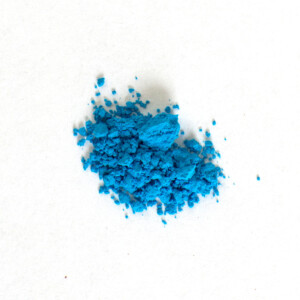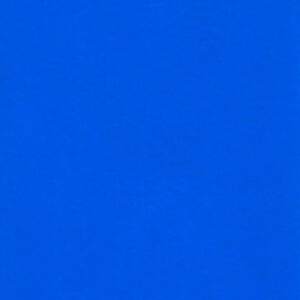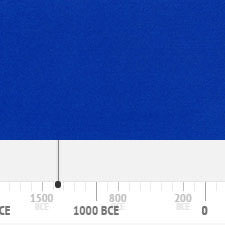Manganese Blue
Artificial inorganic pigmentComposition and Properties of Manganese Blue
The pigment is barium manganate sulfate with the formula of BaMnO4·BaSO4. It is moderately lightfast.

Pigment

Painted swatch
Video: 'A Look at Genuine Manganese Blue' by Walcott Fine Art
Preparation
The pigment is prepared by heating sodium sulfate, potassium permanganate, and barium nitrate at about 750–800 °C.
Names
Alternative names
Cement blue, Bong’s blue, Kuhlmann’s blue
Color Index
PB 33, CI 77112
Word origin
As the name of a black mineral, oxide of manganese (used from ancient times in glassmaking for removing coloring matter), from French manganèse (16c.), from Italian manganese, alteration or corruption of Medieval Latin magnesia.
From Online Etymology Dictionary
Manganblau
German
Bleu de manganèse
French
Azzurro di manganese
Italian
Azul de manganeso
Spanish
History of Use
It was first mentioned as early as in 1869 as a colored substance. The production and its use in cement coloring (mainly for swimming pools) and as an artists’ pigment started in 1935 and was continued until the 1990s. The pigment is not being produced anymore due to environmental concerns and its toxicity.
Identification
References
VIS and near IR spectra of manganese blue are reported in ref (1).
References
(1) Gianluca Accorsi, Giovanni Verri, Angela Acocella, Francesco Zerbetto, Giovanni Lerario, Giuseppe Gigli, David Saunders and Rachel Billinge, Imaging, photophysical properties, and DFT calculations of manganese blue (barium manganate(VI) sulfate) – a modern pigment, Chem. Commun., 2014,50, 15297-15300, DOI: 10.1039/C4CC01986E
Further Reading
References
S. Muntwyler, J. Lipscher, HP. Schneider, Das Farbenbuch, 2nd. Ed., 2023, alataverlag Elsau, p. 113.

